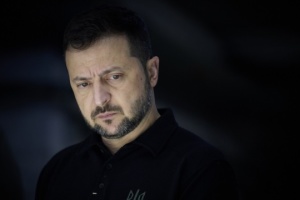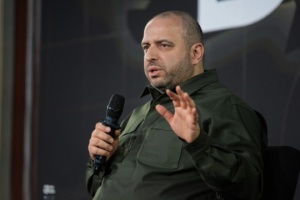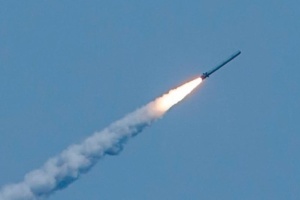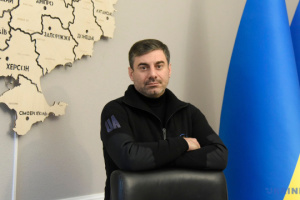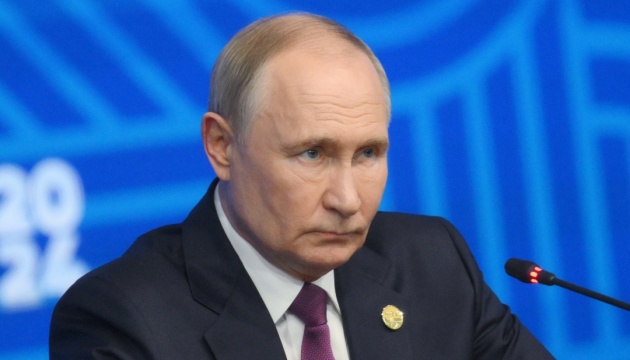
Nuclear Doctrine and Nuclear Blackmail: How the Kremlin Uses Them Against Ukraine and to Destroy International Security
Kremlin propaganda and numerous political commentators, including Russia’s sympathisers abroad, call this decision a “response” to the US permission to strike Russian territory with short-range ATACMS ballistic missiles. Or even a “response” to the strike on the Russian arsenal in the border region of Bryansk.
The Center for Strategic Communications and Information Security explains why Putin’s decree published on 19 November is part of a nuclear blackmail strategy and how the Russians are using it to counteract the operations of the Ukrainian Armed Forces and Ukraine’s diplomatic efforts.
The Doctrine Change: A Component of the Kremlin’s Nuclear Blackmail Strategy
The change, or as it is officially referred to in the Kremlin, the “clarification” of the document titled “The Fundamentals of State Policy of the Russian Federation in the Field of Nuclear Deterrence,” cannot be considered a response to any actions by Ukraine’s Defence Forces or decisions made or announced by foreign states in November.
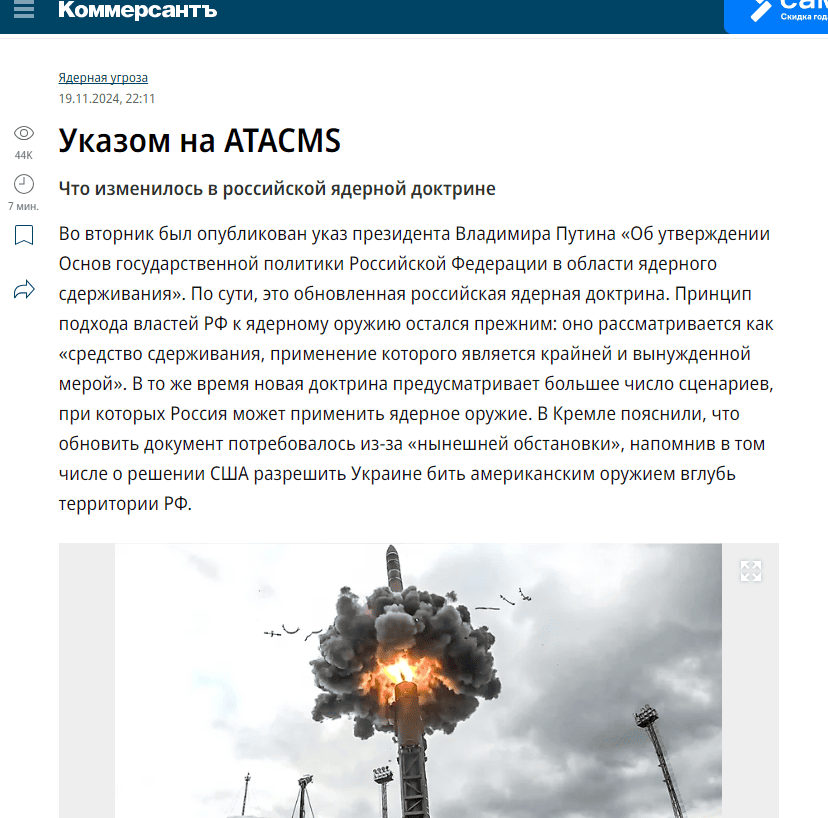
An example of manipulation is the attempt to “link” the change in the nuclear doctrine to the strike on the arsenal in the Bryansk region.
After all, Russian Foreign Minister Sergey Lavrov and dictator Putin personally announced the “clarification” of the doctrine in August, July and June. Throughout the summer and fall, Russian officials and other “talking heads” actively commented on the changes to create additional news hooks and keep the topic in the information space.
Between June 1 and November 19, over 90,000 publications mentioning changes to Russia’s nuclear doctrine appeared in the Russian-language segment of social media and websites, while more than 31,500 such publications were found in the English-language segment.
The peaks in publication activity are linked to statements by officials, the Russian Security Council meeting on September 25, and Putin’s signing of the decree on November 19.
Statements from Russian officials, comments from “talking heads,” and even legally formalized decisions are part of a broader intimidation strategy aimed at exerting pressure on the international community and allowing the Kremlin to avoid accountability for its own crimes.
How Russia’s nuclear doctrine has changed
At the Russian Security Council meeting on September 25, the Kremlin dictator announced proposals to amend his own 2020 decree “On the Fundamentals of the State Policy of the Russian Federation in the Field of Nuclear Deterrence.”
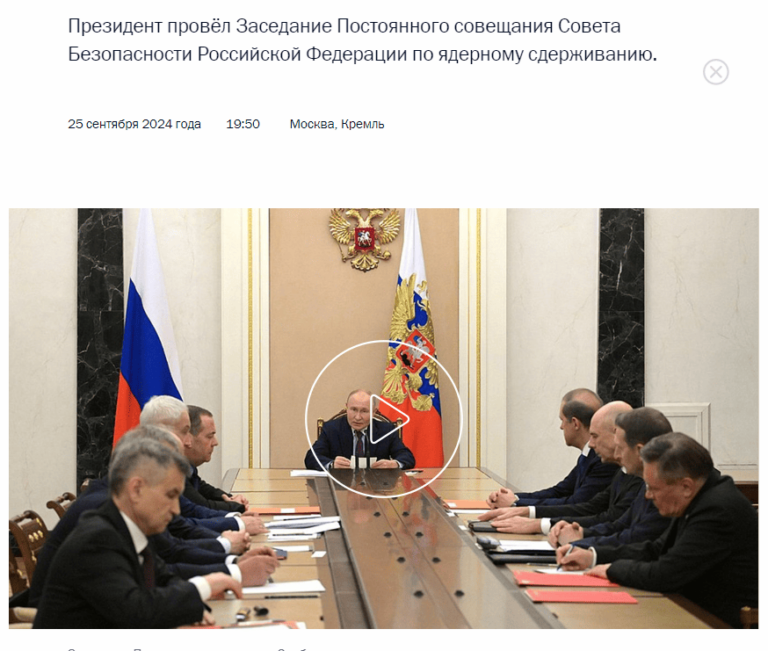
Specifically, the proposals include:
- Considering aggression against the Russian Federation by a non-nuclear state, supported or participated in by a nuclear state, as a “joint attack.”
- Examining the possibility of using nuclear weapons upon receiving “reliable information about a massive launch of aerospace attack systems crossing the state border,” as well as in the case of aggression against the Republic of Belarus and the “creation of a critical threat” to its sovereignty.
If we compare the new proposals with the previous version of the “Fundamentals of Nuclear Deterrence” approved in 2020, it turns out that the proposed changes are limited to the following:
- The introduction of the concept of a “joint attack” by a non-nuclear state and a nuclear state.
- A list of aerospace attack systems, which Putin now includes strategic and tactical aviation aircraft, hypersonic and cruise missiles, as well as drones and “other flying vehicles” (whereas the previous version of the document only mentioned ballistic missiles).
The other points, including the “attack on Belarus” (in the previous version, this referred to all of Russia’s allies), and the “critical threat to sovereignty” (in the 2020 document, it was referred to as a “threat to the existence of the state”), are not new.
Putin’s statements and their specific formulation are aimed at creating the necessary informational backdrop for the Kremlin. The Russians need to ensure that:
- Appear on the front pages of global media outlets;
- Spark public discussion in expert circles;
- Provide pseudo-experts, “talking heads,” and other Russian influence agents with a basis to promote messages beneficial to Putin’s regime and opportunities for further manipulation of the information space.
The Kremlin’s efforts are aimed at intimidating the citizens of foreign countries and their politicians, prompting them to reduce support for Ukraine and encouraging them to take corresponding actions or remain passive. It is no coincidence that statements about changes to the nuclear doctrine intensified amid discussions on granting Ukraine permission to use Western missile systems to strike targets on internationally recognised Russian territory. Additionally, nuclear blackmail escalated in parallel with the Ukrainian Defence Forces’ operation in the Kursk region, which began in August.
How the Kremlin uses nuclear blackmail in the war against Ukraine
Nuclear blackmail is a component of the aggressive war Russia is waging against Ukraine. The Kremlin not only regularly and almost openly threatens the international community with the use of its nuclear arsenal, but the aggressor state also attempts to portray Ukraine as the source of danger. To achieve this, Russian propagandists:
- “Search” for evidence of a Ukrainian nuclear program or intentions to initiate one;
- Frighten the world with claims about Ukrainian terrorists allegedly prepared to detonate a so-called “dirty bomb” for provocation;
- Accuse the Ukrainian Defence Forces of deliberately shelling the occupied Zaporizhzhia Nuclear Power Plant or planning other “provocations.”
In addition to informational measures, the Kremlin also resorts to kinetic actions: the demonstrative movement of nuclear weapons to Belarus, exercises involving tactical nuclear weapons, and the testing of strategic delivery systems. The informational impact of the announced “clarification” of the nuclear doctrine was intended to be enhanced by the effect of a successful intercontinental ballistic missile (ICBM) test. However, it seems this calculation did not pan out. On September 21, OSINT analysts specializing in Russia’s nuclear capabilities released a satellite image showing a crater at the Plesetsk test site. This crater may have been caused by the explosion of an RS-28 Sarmat missile in its launch silo.
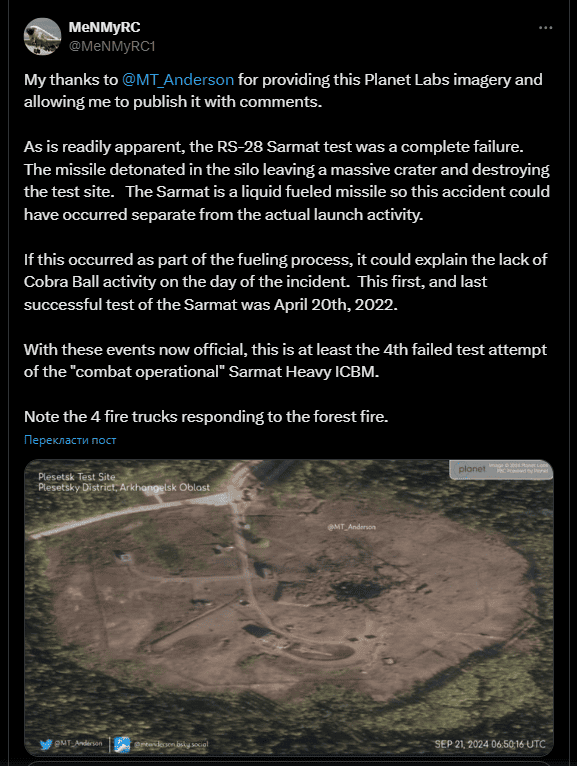
Unlike the accident during tests of the Burevestnik cruise missile in Nyonoksa, Arkhangelsk region, in 2019—which resulted in the deaths of at least five people and caused a radiation spike in the nearby city of Severodvinsk—the incident in Plesetsk did not receive widespread media coverage. The Kremlin opted for its familiar tactic of silence, while Western media limited their reporting to materials based on OSINT findings.
Accusations first against “uncontrolled radical nationalists” and later against the Ukrainian government of developing nuclear weapons were part of the informational groundwork for preparing for full-scale aggression. As early as December 2021, Russians introduced a video hoax into the information space, claiming that “Ukrainian radicals” were manufacturing a “dirty bomb.”
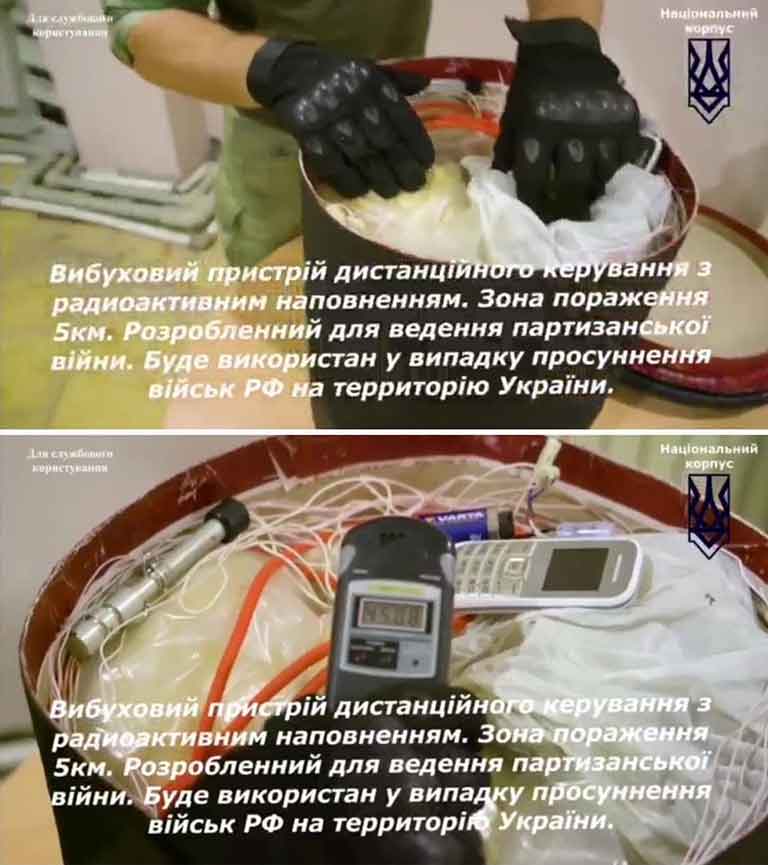
In a video address on February 21, 2022, Putin not only rambled about the “artificiality” of Ukraine and the “sovereignty and independence” of the pseudo-republics in the occupied territories of Donetsk and Luhansk (ORDLO) but also raised the prospect of Ukraine acquiring weapons of mass destruction.
On October 18, 2024, Putin repeated this scare tactic and promised to “prevent the creation of a Ukrainian nuclear bomb” during a meeting with foreign media representatives on the sidelines of the BRICS Business Forum in Moscow, which preceded the organization’s summit in Kazan.
The timing and location of the statement were deliberately chosen to maximize its reach among foreign audiences, promoting the narrative that Ukraine is allegedly a source of nuclear danger and that Russia is the one to “protect” the world from it.
The intensification of Russian nuclear blackmail was recorded against the backdrop of the Ukrainian Defence Forces’ operations in the Kursk region and the US presidential election.
Starting on 6 August, Kremlin propaganda launched an operation to discredit the Ukrainian offensive in Russia by accusing the Ukrainian Armed Forces of intending to seize the Kursk nuclear power plant in Kurchatov, or at least attack it with drones, artillery and missiles. At the same time, there were scaremongering about the preparation of “provocations” at the Zaporizhzhia NPP in occupied Enerhodar. Active support for the ‘threat to NPPs’ thesis continued until the first half of September. In August-October, more than 165,000 messages on this topic were posted in the Russian-language segment of the Internet alone.
The intensity of publications about the “threat to nuclear power plants” in Russian-language media has significantly increased.
On November 5, the day of the U.S. presidential elections, the head of the Russian Armed Forces’ Radiological, Chemical, and Biological Defense Troops, Igor Kirillov, once again repeated the propaganda narrative about the Kursk Nuclear Power Plant and accused Ukraine of preparing an attack on the occupied Zaporizhzhia Nuclear Power Plant.
On November 7, the same claims were reiterated by the Secretary of the Russian Security Council and former Minister of Defence, Sergei Shoigu.
At the same time, Kremlin-controlled Telegram channels and other resources synchronously spread accusations against Ukraine, alleging plans to strike nuclear arsenals on Russian territory and re-circulating the old hoax about a “dirty bomb.” Over the course of two weeks in November, more than 8,000 messages containing these narratives were posted in the Russian-language segment of the internet.
The intensity of the publication about the ‘Ukrainian nuclear threat’ in Russian
The key task of this phase of the special operation was to influence the current and future US administration to block permission to launch Western tactical missiles at Russian territory.
Russia persistently tries to portray Ukraine as a terrorist state. However, it is the Russian military that has repeatedly committed acts of nuclear terrorism, and the political leadership does not hesitate to use nuclear blackmail to exert pressure on the international community. The Russians occupied and turned Europe’s largest nuclear power plant, Zaporizhzhya NPP, into a military base, seized the Chernobyl NPP, and shelled the Neutron Source nuclear facility in Kharkiv. For the Kremlin, blatant nuclear blackmail is a tool through which the aggressor seeks not only to influence the level of international assistance to Ukraine, but also to dictate its demands to other states through intimidation. The actions of the Russian regime not only violate international law but also pose a threat of uncontrolled nuclear weapons proliferation.
Center for Strategic Communications and Information Security

